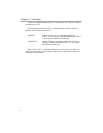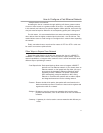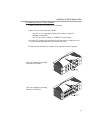
Apart from the length limit, users have to pay attention to three other special
regulations when uplinking two hubs together:
1. When uplinking two network devices together, one jack on each hub must
be used.
2. The uplink cable used between both hubs must be a straight-through
UTP-5, STP-1 or equivalent twisted-pair cable.
3. If using the uplink jack to uplink with another switch or hub, regular port
adjacent to the uplink port must be left free. If the regular port is being
used, the uplink jack must be left free. Both jacks must not be used at
the same time.
Apart from expanding a network, uplinking hubs together can allow users to
adopt different types of network topologies to manage their needs.
Different Network Topologies
Depending on users' needs, the hub can be used either as a standalone device
or it can used in a multiple-device environment.
- Standalone device
When just one hub is being used in a network, the hub is said to be a stand-
alone hub. The hub can only be connected to users' workstations. In this case, the
network's main function will be to exchange data in peer-to-peer relationships.
If users not only want to exchange data between end nodes, but also want to
give all connected workstations access to a common pool of data, it will be neces-
sary to connect a server to the network. A server is a central workstation that
stores either data, applications or both. It connects to a hub just like any other net-
work workstation.
Other devices can also be connected to a hub to increase the number of ser-
vices available to users. A central printer eliminates the need to connect each
workstation to a dedicated printer. An IP sharing device can allow all network users
to have access to the Internet through only one modem, ISP account and IP
address.
10
Chapter 4 - continued


















